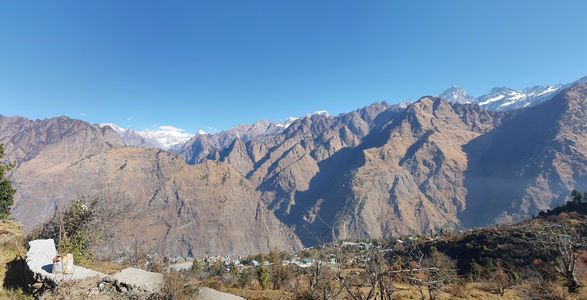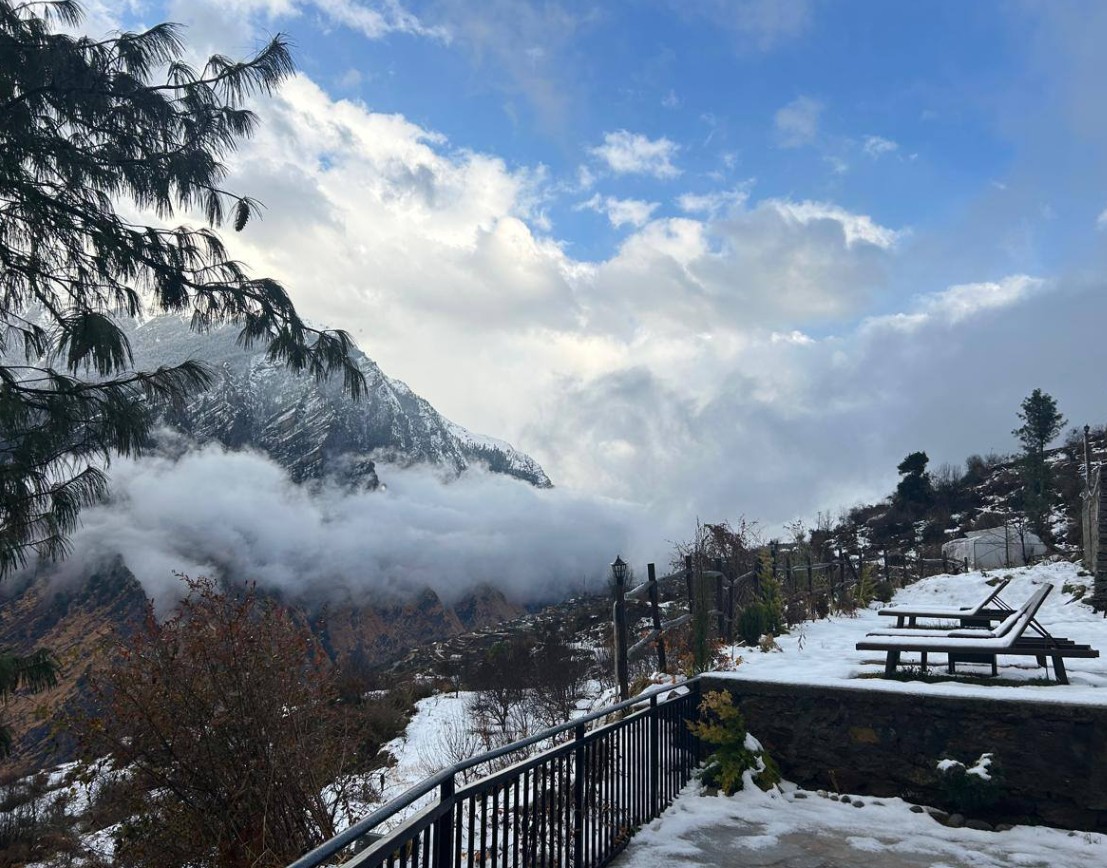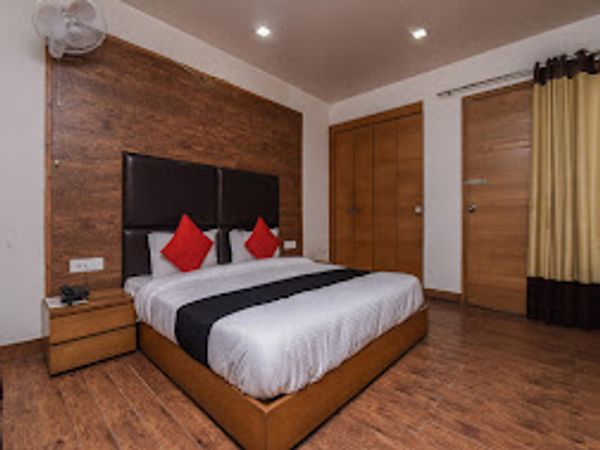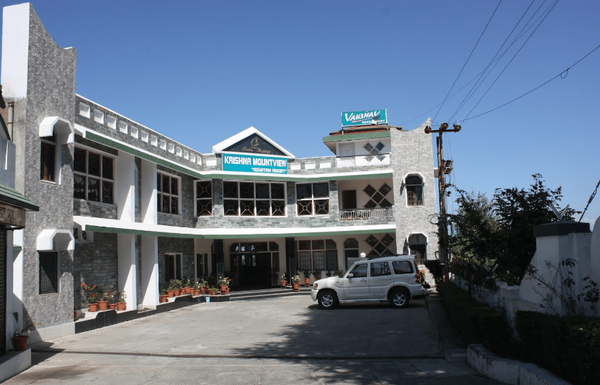Joshimath: Spiritual Gateway to the Himalayas and Beyond
 Ankit Rawat
18 Jul, 2025
13 mins read
48
Ankit Rawat
18 Jul, 2025
13 mins read
48

Nestled high in the Chamoli district of Uttarakhand, Joshimath is a place where spirituality, natural beauty, and adventure coexist in quiet harmony. Perched at an elevation of approximately 1,875 meters, this serene town is more than just a stopover for pilgrims and trekkers it's a destination in itself.
Also known as Jyotirmath, Joshimath is a hub for seekers of both divine grace and mountain thrills. It serves as the gateway to Badrinath, the ski slopes of Auli, and the Valley of Flowers, while also offering deep spiritual roots through ancient temples and legends. Whether you’re climbing snowy peaks, sitting in meditation under a 2,500-year-old tree, or simply sipping tea while watching the clouds roll over distant summits, Joshimath quietly reminds you: you’re in the heart of the Himalayas.
A Journey Through the Hills: How to Reach Joshimath
Reaching Joshimath is a journey through some of India’s most scenic mountain roads. The most common route starts from Haridwar or Rishikesh, well-connected by train, bus, and air (via Dehradun).
From there, it’s a 275 km road journey through winding roads, gorges, and river confluences. Along the way, you’ll pass sacred towns like Devprayag, Rudraprayag, and Karnaprayag, each nestled at the meeting point of powerful Himalayan rivers.
Travel options include:
- State-run buses to Chamoli or Joshimath
- Shared cabs from Rishikesh or Chamoli
- Private taxis for more comfort and flexibility
The journey takes around 10–12 hours, but the stunning vistas of the Alaknanda River, dense pine forests, and snow-tipped peaks make it unforgettable.
Sacred Roots: Joshimath’s Spiritual Significance
Joshimath is one of the four cardinal ‘mathas’ established by Adi Shankaracharya, the 8th-century philosopher and reformer who played a vital role in unifying Hindu thought across India. His teachings laid the foundation of Advaita Vedanta, and the monastery here continues to uphold that lineage.
Key Spiritual Sites:
- Shankaracharya Math: The northern seat of Adi Shankaracharya’s spiritual empire. A quiet and serene place for introspection.
- Narsingh Temple: Dedicated to the fourth incarnation of Lord Vishnu Narasimha. During the winter months, when Badrinath Temple becomes inaccessible due to snow, the idol of Lord Badrinath is moved to this temple, making Joshimath the temporary winter abode of the deity.
- Kalpavriksha Tree: Believed to be over 2,500 years old, this ancient mulberry tree under which Adi Shankaracharya meditated still stands. Locals believe the tree has miraculous powers and is symbolic of spiritual endurance.
Myths, rituals, and centuries-old traditions echo through these sacred sites, offering a deep sense of spiritual calm to visitors and pilgrims alike.
Life in a Mountain Town: Local Culture and People
Joshimath is not just a tourist town it is home to a warm and deeply spiritual community. Most residents are Garhwali Hindus, and their daily life is a mix of devotion, agriculture, and tourism. The Jaunsari and Bhotiya tribes also reside in the region, adding a colorful mix of language, customs, and attire.
In the narrow lanes of the main bazaar, you’ll see:
- Wool vendors selling handwoven shawls and sweaters
- Sweet shops offering jalebi, samosas, and steaming cups of chai
- Puja stores with bells, incense, and copper pots for pilgrims
The pace of life is slow, grounded in simplicity, and full of warmth.
Adventure Awaits: Joshimath for Trekkers and Thrill-Seekers
Joshimath is the base camp for some of Uttarakhand’s most iconic treks and adventure spots. Whether you're a beginner or a seasoned hiker, the surrounding region has something for every outdoor enthusiast.

Top Adventures:
- Auli: Just 12 km from Joshimath, Auli is India’s premier ski destination. From December to February, its slopes attract skiers from around the world. Auli also boasts one of Asia’s longest and highest ropeways, offering breathtaking aerial views of the mountains.
- Valley of Flowers and Hemkund Sahib: A UNESCO World Heritage Site, the Valley of Flowers bursts into color during July and August. Hemkund Sahib, a revered Sikh pilgrimage site, lies further uphill, accessible via a challenging trek.
- Kuari Pass Trek: Also known as the “Curzon Trail,†this beginner-friendly trek offers spectacular views of Nanda Devi, Dronagiri, and other Himalayan peaks.
- Bagini Glacier and Pangarchulla Peak: More demanding treks for those seeking raw Himalayan wilderness and high-altitude challenges.
Where to Stay: Accommodation in Joshimath
Joshimath caters to all types of travelers, from pilgrims on a tight budget to luxury seekers heading to Auli.
Options include:
- Budget guesthouses and dharamshalas
- Mid-range hotels with mountain-facing rooms and basic amenities
- Premium resorts in Auli offering luxury, spa services, and private ski lessons
Most places offer:
- Comfortable beds
- Hot water (often solar-heated)
- Delicious Garhwali meals
Booking in advance is advisable during peak seasons (May–June and Dec–Feb), especially if you're headed toward Auli or Badrinath.
What to Eat: Flavors of the Himalayas
The food in Joshimath is simple, flavorful, and heartwarming. You’ll find many restaurants serving North Indian vegetarian fare, ideal for pilgrims. Some Tibetan joints and cafes cater to trekkers with:
- Momos and thukpa
- Dal, rice, and seasonal sabzi
- Madua (finger millet) roti, a local specialty
- Chai with fresh mountain herbs
Don’t miss local sweets like bal mithai and singori, often available in sweet shops around the bazaar.
Insider Tips for a Smooth Trip
- Acclimatization: If you're heading higher to Auli, Valley of Flowers, or Badrinath, spend a day in Joshimath to acclimate to the altitude.
- Connectivity: Mobile networks like Jio and BSNL work reasonably well; others may be unreliable.
- Packing Essentials:
- Warm clothing (even in summer)
- Torchlight, first aid kit, sunscreen
- Reusable water bottle (plastic ban in place)
4. ATM and Cash: Carry enough cash; ATMs are limited and sometimes out of service.
5.Respect Local Customs: Dress modestly around temples, seek permission before photographing locals.
Best Time to Visit Joshimath
Joshimath is a year-round destination, but each season brings a different flavor.
- Summer (April–June): Pleasant weather for temple visits and treks.
- Monsoon (July–September): Best for the Valley of Flowers, but roads may be affected by landslides.
- Autumn (October–November): Clear skies and golden landscapes—perfect for photographers.
- Winter (December–March): Ideal for skiing in Auli and experiencing the winter home of Badrinarayan.
Final Reflections: A Place of Journeys Within and Without
Joshimath is more than a place on the map it is a threshold. A point where physical journeys into the mountains begin, but also where inner journeys toward peace and reflection are sparked. Whether you come seeking spiritual awakening, natural beauty, or pure adventure, Joshimath gives you what you didn’t even know you needed: stillness, wonder, and connection.
So next time you're headed to Badrinath or Auli, don’t just pass through. Stay a while. Let the air teach you silence, the peaks teach you humility, and the people teach you joy.
Written By:
Ankit Rawat



Hotels at your convenience
Now choose your stay according to your preference. From finding a place for your dream destination or a mere weekend getaway to business accommodations or brief stay, we have got you covered. Explore hotels as per your mood.



